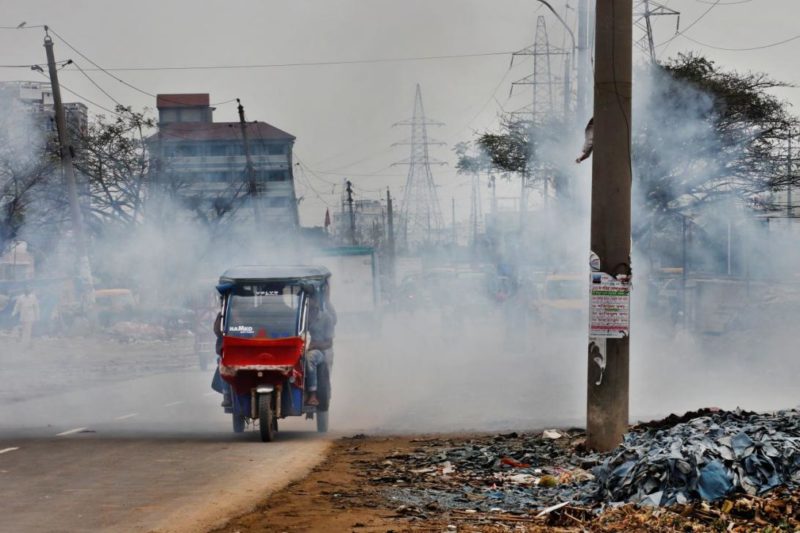Published in on Sunday 19 May 2019

GDP does not tell us anything about rising inequalities or quality of life
Our obsession with Gross Domestic Product (GDP) seems to be growing every day while economists keep questioning its source, method, authenticity, etc.
There is no doubt that Bangladesh’s economy has been doing far better than before. But this is not new. Every decade has given us one additional percentage of GDP growth in Bangladesh. For an economy which starts from a low level of growth but is making efforts to move forward, its growth rate will be higher than economies which have already crossed that trajectory and become advanced countries. Thus comparing our GDP growth with those countries is flawed.
While Bangladesh may exceed some of the advanced economies in terms of its GDP growth rate and size, it may still be behind in terms of addressing inequality and ensuring distributive justice. As it stands now, the top five percent of the population possess about 29 percent of national income while the bottom five percent account for only 0.23 percent of the national income. The pace of poverty reduction is slowing while the speed of the growth of the ultra-rich population is increasing. Inequality in consumption and asset ownership is also on the rise. Thus the distributional aspect is totally absent in the GDP concept.
The limitations of GDP are rooted in the way it is calculated. GDP refers to the goods and services produced in a country in a given year. That is all. It does not say anything more than that. It cannot say whether the quality of life has improved or not, whether everyone has received the benefit of that growth or not, whether it has reduced inequality or not, whether the growth is sustainable or not, and so on. Since GDP is the market value of goods and services, whatever is transacted in the market in exchange for money contributes to GDP. Herein lies the danger. The GDP calculation method does not care about the source of such contributions.
One of my favourite examples is the issue of environmental degradation. The intrinsic value of the environment is not taken into consideration as it does not have a market price. Infrastructural or industrial development may happen by wiping out forests and trees. Construction activities or industrial products will increase GDP. If those trees are sold in the market, even that would add to GDP. But what is the real cost of such development? If one takes into account the cost of environmental degradation and natural resource depletion, the sustainable growth rate or “green” GDP would be much less than the estimated growth rate.
GDP also does not take into account the unpaid household activities performed by women. When my mother used to cook for us, she did not contribute to GDP even though without her care and domestic work, we could not have studied or worked outside and contributed to the economy. But had she sold the food she prepared, she would have added to economic growth! GDP is all about spending money in the economy. Thus when my father retired and was left with pension only, his contribution to GDP immediately fell.
This obsession with GDP overlooks the core problems of the economy. Private investment is stuck at around 23 percent of GDP—inadequate for maintaining such a growth momentum and for creating enough jobs for the youth. Public investment is increasing mainly on physical infrastructure, while social infrastructure is being ignored. There is low investment in public education, and barely any monitoring of the quality of the mushrooming roadside private educational institutions that provide certificates but cannot convert certificate-holders into useful human capital. Thus their employability is low despite a crying demand for skilled human resources.
With an allocation of two percent of GDP towards education, one does not expect better. Healthcare receives even less than one percent of GDP. Hence the poor facilities in public hospitals and clinics, particularly outside the capital, deprive larger communities of quality healthcare. People spend almost 72 percent of their total health costs out of their own pockets. Out-of-pocket expenditure on health is highest in Bangladesh compared to other South Asian countries. Rule of law, social justice, safety and security are everyday concerns. While we boast about achieving many gender-related targets, violence against women and girls has become endemic. Numerous such incidents go unnoticed as they are not reported. Perpetrators get away with such heinous crimes by resorting to political power.
As I sign off writing this column, an alarming piece of news flashes on the screen. Bank defaulters have been rewarded with a spectacular rescheduling facility. They can delay their loan repayment by paying only two percent down payment rather than the existing 10-15 percent. They will have to pay only a maximum of nine percent interest on their rescheduled loans, but the existing rate is 12-16 percent. Their repayment tenure is 10 years with a grace period of one year. Burdened with soaring loan defaults, the banking sector is now taking a U-turn instead of solving the problems once and for all. This will only encourage willful defaulters. It risks putting pressure on the liquidity situation and net profit of banks. Such facilities may provide temporary breathing space for the defaulters, but this will have a negative impact on the banking sector.
So, what type of growth are we talking about? Because GDP growth is only a hazy number that does not address the fundamental aspects of economic development. This highly politicised number does not say much about the quality of life of all citizens.
Dr Fahmida Khatun is the executive director of the Centre for Policy Dialogue.

